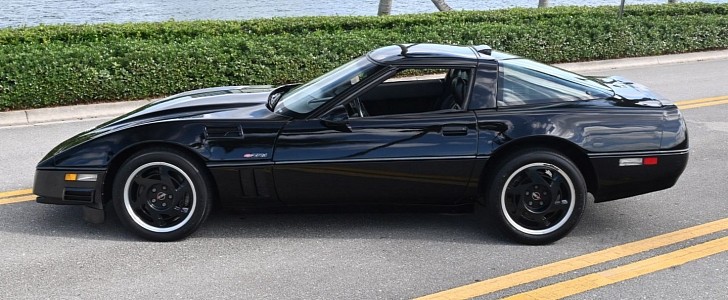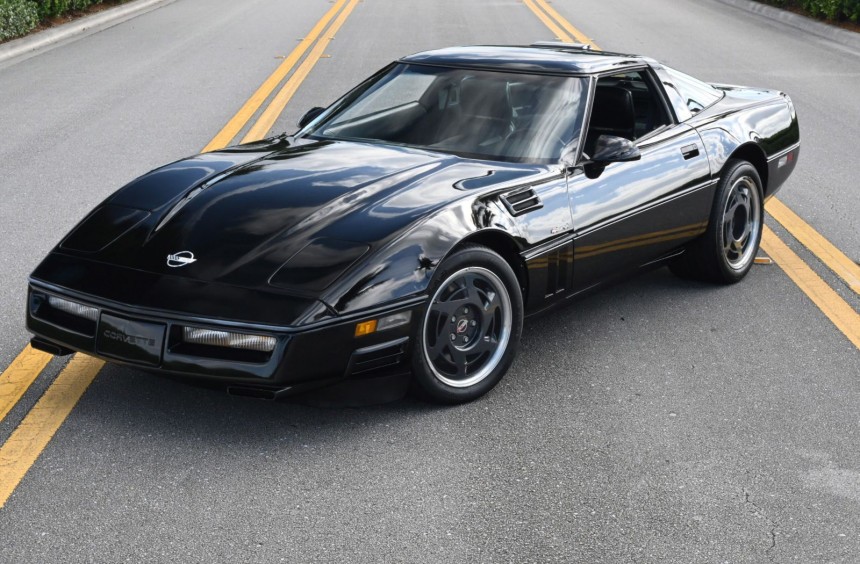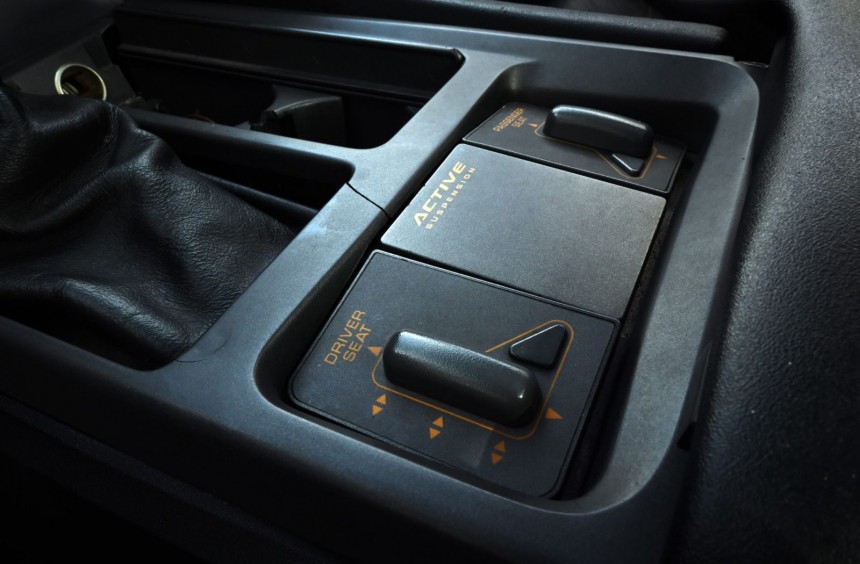More than three decades ago, General Motors researched the feasibility of releasing the ZR-1 Corvette C4 with an active suspension system. Extremely sophisticated for its time, it was the brainchild of Lotus engineers who employed it in the 1987 Formula 1 season.
During the late 1980s, GM was preparing to unleash a new ZR-1. Determined to make this variant one of the most sought-after sports cars in the world, the corporation enlisted the help of British manufacturer Lotus. Known for their motorsport ventures, as well as for building some of the best-handling vehicles on the planet, the company’s controlling stake had recently been purchased by GM, which made things even more convenient.
As you probably know by now, this collaboration saw the birth of a technological marvel dubbed LT5. A double overhead cam, 32-valve, naturally-aspirated V8, it easily made 375 England-bred horses which helped the ZR-1 stand out from the standard C4 and all other performance-oriented cars built on U.S. soil at the time.
One thing you probably didn’t know is that GM and Lotus also worked on an active suspension system that was set to make the ZR-1 even more impressive.
While similar technologies had been experimented with for decades, a computer-controlled active system so complex was a novelty for a production vehicle. Lotus had developed the base architecture for this technology to gain an edge in Formula 1. They even had the legendary Ayrton Senna test it on the 99T open-wheeler for the full 1987 season, but the weight of the extra hardware proved to be too much, so neither the team nor Senna managed to earn a trophy that year.
Impressed with the system’s potential, GM allocated no less than $27 million ($64 million today) to implement it on the high-performance Corvette, kickstarting the Active Suspension program. During the next two years, American engineers took the Lotus blueprints, adapted the system to the rigors of daily driving on public roads, and equipped it on 25 pre-production King of the Hill prototypes.
The brain of the system was a Delco-developed that analyzed tire load, throttle response, speed, steering angle, and several other parameters. It controlled a set of valves, regulating the flow of hydraulic fluid from a belt-driven pump operating at 3,000 psi (206.8 bar), to all four shock absorbers. By doing so, understeer or oversteer could be actively eliminated, resulting in far better handling, but also increased comfort for the passengers.
The prototypes racked up tens of thousands of miles, testing the system in every condition conceivable. Some of them showed encouraging results, but no matter how hard engineers tried to perfect the innovative suspension, it didn’t work flawlessly on all 25 cars. The quality of the sensors was nowhere near what is available today, so while some worked well, others were faulty. Moreover, the computing power was struggling to keep up with the abundance of inputs, the system encountered cooling issues, and the high pressures at which the hydraulic pump was operating raised long-term reliability concerns.
In the end, the project was halted, and the Corvette had to wait another decade until it got a functional, mass-produced active suspension.
To keep their developments away from rival carmakers, the engineering team destroyed most of the cars that were fitted with this system. It is believed that only three of them survived as part of the GM Heritage collection.
When searching for a ZR-1 scale model on eBay, you wouldn’t expect to find one of these surviving prototypes. No, I’m not talking about a scale model, but the actual car, which is currently listed for sale by RMC Miami, and can be had for fewer bucks than a new, fully loaded C8. It is unclear how it escaped the Heritage Center, but as the active suspension controls and the documentation it comes with can attest, it is the real deal.
Although it never made it into production, the Active Suspension Corvette ZR-1 experiment paved the way for more advanced systems like the highly-praised MagneRide we can enjoy today.
As you probably know by now, this collaboration saw the birth of a technological marvel dubbed LT5. A double overhead cam, 32-valve, naturally-aspirated V8, it easily made 375 England-bred horses which helped the ZR-1 stand out from the standard C4 and all other performance-oriented cars built on U.S. soil at the time.
One thing you probably didn’t know is that GM and Lotus also worked on an active suspension system that was set to make the ZR-1 even more impressive.
Impressed with the system’s potential, GM allocated no less than $27 million ($64 million today) to implement it on the high-performance Corvette, kickstarting the Active Suspension program. During the next two years, American engineers took the Lotus blueprints, adapted the system to the rigors of daily driving on public roads, and equipped it on 25 pre-production King of the Hill prototypes.
The brain of the system was a Delco-developed that analyzed tire load, throttle response, speed, steering angle, and several other parameters. It controlled a set of valves, regulating the flow of hydraulic fluid from a belt-driven pump operating at 3,000 psi (206.8 bar), to all four shock absorbers. By doing so, understeer or oversteer could be actively eliminated, resulting in far better handling, but also increased comfort for the passengers.
In the end, the project was halted, and the Corvette had to wait another decade until it got a functional, mass-produced active suspension.
To keep their developments away from rival carmakers, the engineering team destroyed most of the cars that were fitted with this system. It is believed that only three of them survived as part of the GM Heritage collection.
When searching for a ZR-1 scale model on eBay, you wouldn’t expect to find one of these surviving prototypes. No, I’m not talking about a scale model, but the actual car, which is currently listed for sale by RMC Miami, and can be had for fewer bucks than a new, fully loaded C8. It is unclear how it escaped the Heritage Center, but as the active suspension controls and the documentation it comes with can attest, it is the real deal.
Although it never made it into production, the Active Suspension Corvette ZR-1 experiment paved the way for more advanced systems like the highly-praised MagneRide we can enjoy today.
















